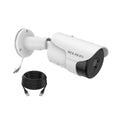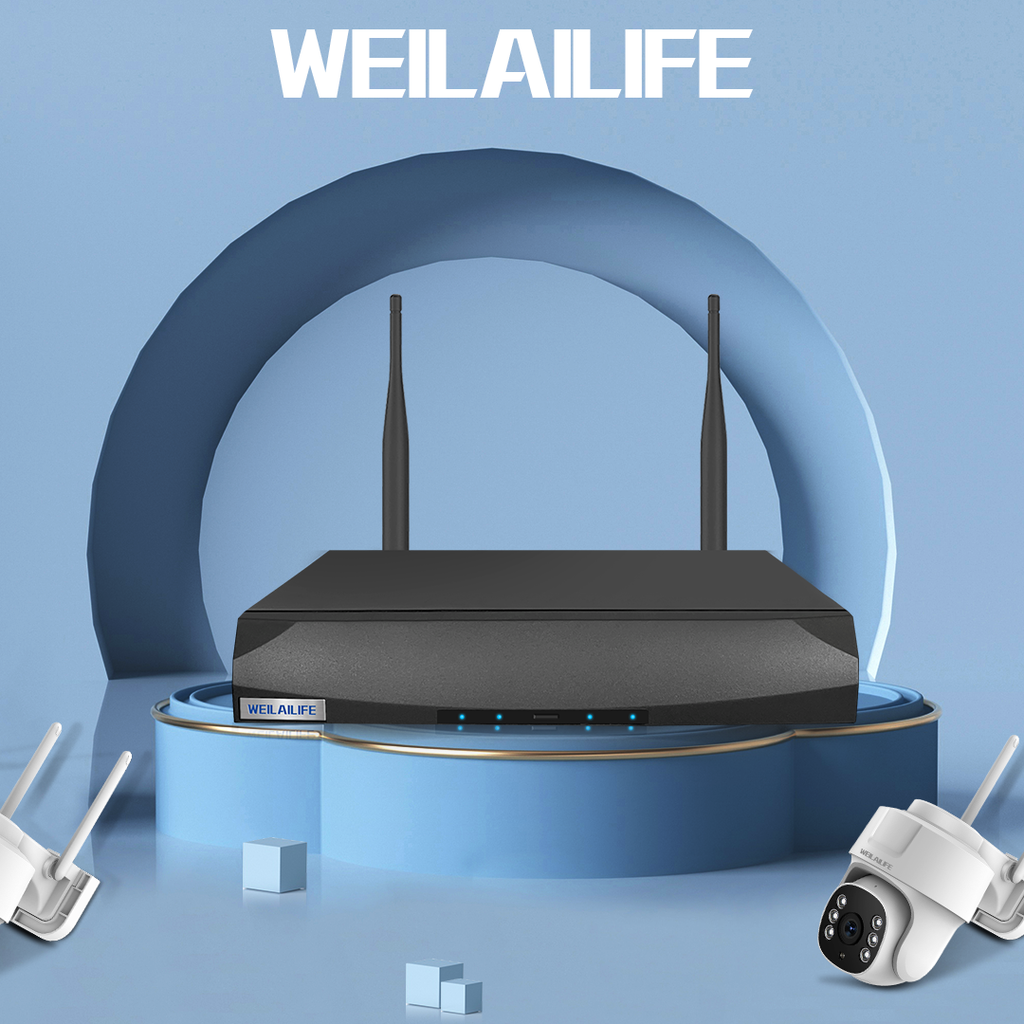Evolution of Surveillance Cameras: A Journey from Analog to Complete IP Video Systems
Introduction:
In today's fast-paced world, security is of utmost importance, and surveillance cameras have played a crucial role in ensuring safety for both businesses and homes. As a leading brand in the surveillance device industry, WEILAILIFE has witnessed and contributed to the transformative journey of surveillance cameras. Let's delve into the three generations of surveillance camera systems that have shaped the landscape of security monitoring.
First Generation: Traditional Analog Closed-Circuit Television (CCTV) System
The first generation of surveillance cameras relied on conventional analog closed-circuit television systems. This system included dedicated equipment such as cameras, cables, video recorders, and monitors. Cameras transmitted video signals through specialized coaxial cables, connecting to analog video devices such as video splitters, matrices, switchers, VCRs, and video monitors.
Second Generation: Analog-Digital Video Recording (DVR) System
The second generation introduced the analog-digital video recording system (DVR), which served as a semi-analog and semi-digital solution. The core of this system was the digital hard disk recorder (DVR). Despite the transition to digital recording, the connection between cameras and DVRs still relied on coaxial cables to transmit video signals. The DVR allowed for simultaneous recording and playback and supported limited IP network access. However, the complex wiring requirements remained, with each camera requiring separate video cables, limiting scalability. Typical DVRs could accommodate up to 32 cameras at most.
Third Generation: Complete IP Video Surveillance System (IPVS)
The third generation represents the future of surveillance technology with fully integrated IP video surveillance systems (IPVS). This system significantly differs from the previous generations. IPVS introduces cameras with built-in web servers and direct Ethernet ports. These cameras can generate JPEG or MPEG4 data files, allowing authorized clients to access, monitor, record, and print the footage from any location on the network. Unlike traditional analog systems that generate continuous analog video signal images, IPVS utilizes digital data transmission, enhancing flexibility and scalability.
Conclusion:
As the world continues to embrace advancements in technology, WEILAILIFE is at the forefront of revolutionizing the surveillance camera industry. From the early days of analog CCTV to the hybrid DVR era and now the innovative IPVS, our commitment to providing cutting-edge POE security camera systems remains unwavering. As businesses and individuals seek comprehensive security solutions, WEILAILIFE's complete surveillance systems, powered by POE technology, are designed to meet the diverse needs of modern security challenges. With our range of 4K, high-resolution, wired, and wireless security camera systems, we empower our customers with the latest tools to ensure safety, protection, and peace of mind.
In today's fast-paced world, security is of utmost importance, and surveillance cameras have played a crucial role in ensuring safety for both businesses and homes. As a leading brand in the surveillance device industry, WEILAILIFE has witnessed and contributed to the transformative journey of surveillance cameras. Let's delve into the three generations of surveillance camera systems that have shaped the landscape of security monitoring.
First Generation: Traditional Analog Closed-Circuit Television (CCTV) System
The first generation of surveillance cameras relied on conventional analog closed-circuit television systems. This system included dedicated equipment such as cameras, cables, video recorders, and monitors. Cameras transmitted video signals through specialized coaxial cables, connecting to analog video devices such as video splitters, matrices, switchers, VCRs, and video monitors.
Second Generation: Analog-Digital Video Recording (DVR) System
The second generation introduced the analog-digital video recording system (DVR), which served as a semi-analog and semi-digital solution. The core of this system was the digital hard disk recorder (DVR). Despite the transition to digital recording, the connection between cameras and DVRs still relied on coaxial cables to transmit video signals. The DVR allowed for simultaneous recording and playback and supported limited IP network access. However, the complex wiring requirements remained, with each camera requiring separate video cables, limiting scalability. Typical DVRs could accommodate up to 32 cameras at most.
Third Generation: Complete IP Video Surveillance System (IPVS)
The third generation represents the future of surveillance technology with fully integrated IP video surveillance systems (IPVS). This system significantly differs from the previous generations. IPVS introduces cameras with built-in web servers and direct Ethernet ports. These cameras can generate JPEG or MPEG4 data files, allowing authorized clients to access, monitor, record, and print the footage from any location on the network. Unlike traditional analog systems that generate continuous analog video signal images, IPVS utilizes digital data transmission, enhancing flexibility and scalability.
Conclusion:
As the world continues to embrace advancements in technology, WEILAILIFE is at the forefront of revolutionizing the surveillance camera industry. From the early days of analog CCTV to the hybrid DVR era and now the innovative IPVS, our commitment to providing cutting-edge POE security camera systems remains unwavering. As businesses and individuals seek comprehensive security solutions, WEILAILIFE's complete surveillance systems, powered by POE technology, are designed to meet the diverse needs of modern security challenges. With our range of 4K, high-resolution, wired, and wireless security camera systems, we empower our customers with the latest tools to ensure safety, protection, and peace of mind.
Sample Block Quote
Nam tempus turpis at metus scelerisque placerat nulla deumantos sollicitudin delos felis. Pellentesque diam dolor an elementum et lobortis at mollis ut risus. Curabitur semper sagittis mino de condimentum.
Sample Paragraph Text
Lorem ipsum dolor sit amet, consectetur adipiscing elit. Morbi ut blandit risus. Donec mollis nec tellus et rutrum. Orci varius natoque de penatibus et magnis dis parturient montes, nascetur ridiculus mus. Ut consequat quam a purus faucibus scelerisque. Mauris ac dui ante. Pellentesque congue porttitor tempus. Donec sodales dapibus urna sed dictum.









